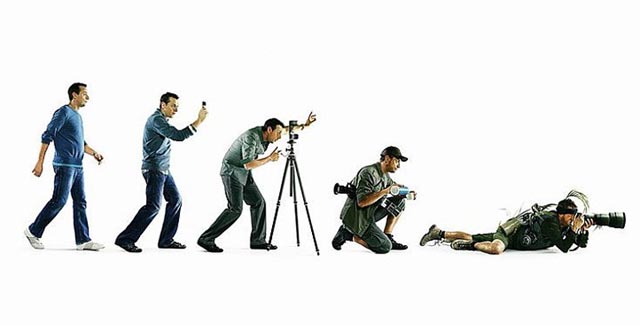Posts Tagged → photographer
Post-mortem photography
Post-mortem photography (also known as memorial portraiture or memento mori) is the practice of photographing the recently deceased.
The invention of the daguerreotype in 1839 made portraiture much more commonplace, as many of those who were unable to afford the commission of a painted portrait could afford to sit for a photography session. This cheaper and quicker method also provided the middle class with a means for memorializing dead loved ones.

Parents posing with their deceased daughter.
These photographs served less as a reminder of mortality than as a keepsake to remember the deceased. This was especially common with infants and young children; Victorian era childhood mortality rates were extremely high, and a post-mortem photograph might be the only image of the child the family ever had. The later invention of the carte de visite, which allowed multiple prints to be made from a single negative, meant that copies of the image could be mailed to relatives.
The practice eventually peaked in popularity around the end of the 19th century and died out as “snapshot” photography became more commonplace, although a few examples of formal memorial portraits were still being produced well into the 20th century.

A post-mortem photograph of a middle-aged man. The body is arranged so as to appear lifelike (circa 1860).
The earliest post-mortem photographs are usually close-ups of the face or shots of the full body and rarely include the coffin. The subject is usually depicted so as to seem in a deep sleep, or else arranged to appear more lifelike. Children were often shown in repose on a couch or in a crib, sometimes posed with a favorite toy or other plaything. It was not uncommon to photograph very young children with a family member, most frequently the mother. Adults were more commonly posed in chairs or even braced on specially-designed frames. Flowers were also a common prop in post-mortem photography of all types.
The effect of life was sometimes enhanced by either propping the subject’s eyes open or painting pupils onto the photographic print, and many early images (especially tintypes and ambrotypes) have a rosy tint added to the cheeks of the corpse.
Later examples show less effort at a lifelike appearance, and often show the subject in a coffin. Some very late examples show the deceased in a coffin with a large group of funeral attendees; this type of photograph was especially popular in Europe and less common in the United States.
Post-mortem photography is still practiced in some areas of the world, such as Eastern Europe. Photographs, especially depicting persons who were considered to be very holy lying in their coffins are still circulated among faithful Eastern Catholic, Eastern Orthodox and Oriental Orthodox Christians.
Mike Judge’s future won’t be blue

The LA Times has this interesting photo of Bevis & Butthead, Office Space, King of the Hill, Idiocracy and The Goode Family.
Another series created by Judge, with John Altschuler and David Krinsky, “The Goode Family,” about a family of left-wing vegans navigating life with their bleeding hearts on their sleeves, was canceled this year after its first season.
“I’m OK with that too,” he adds.
That may be because many of Judge’s projects have received a second lease on life, gaining popularity and appreciation with age, usually accompanied by the descriptor “underrated” when brought up in casual conversation. And no film better typifies this curious phenomenon than his “Office Space.” In the film, Peter, a miserable IT employee played by Ron Livingston, is hypnotized into not worrying about his job. His hypnotist dies suddenly before rousing Peter out of his relaxed state, and he returns to work, occasionally, with an anarchic attitude and an open disdain for white-collar cubicle culture.
